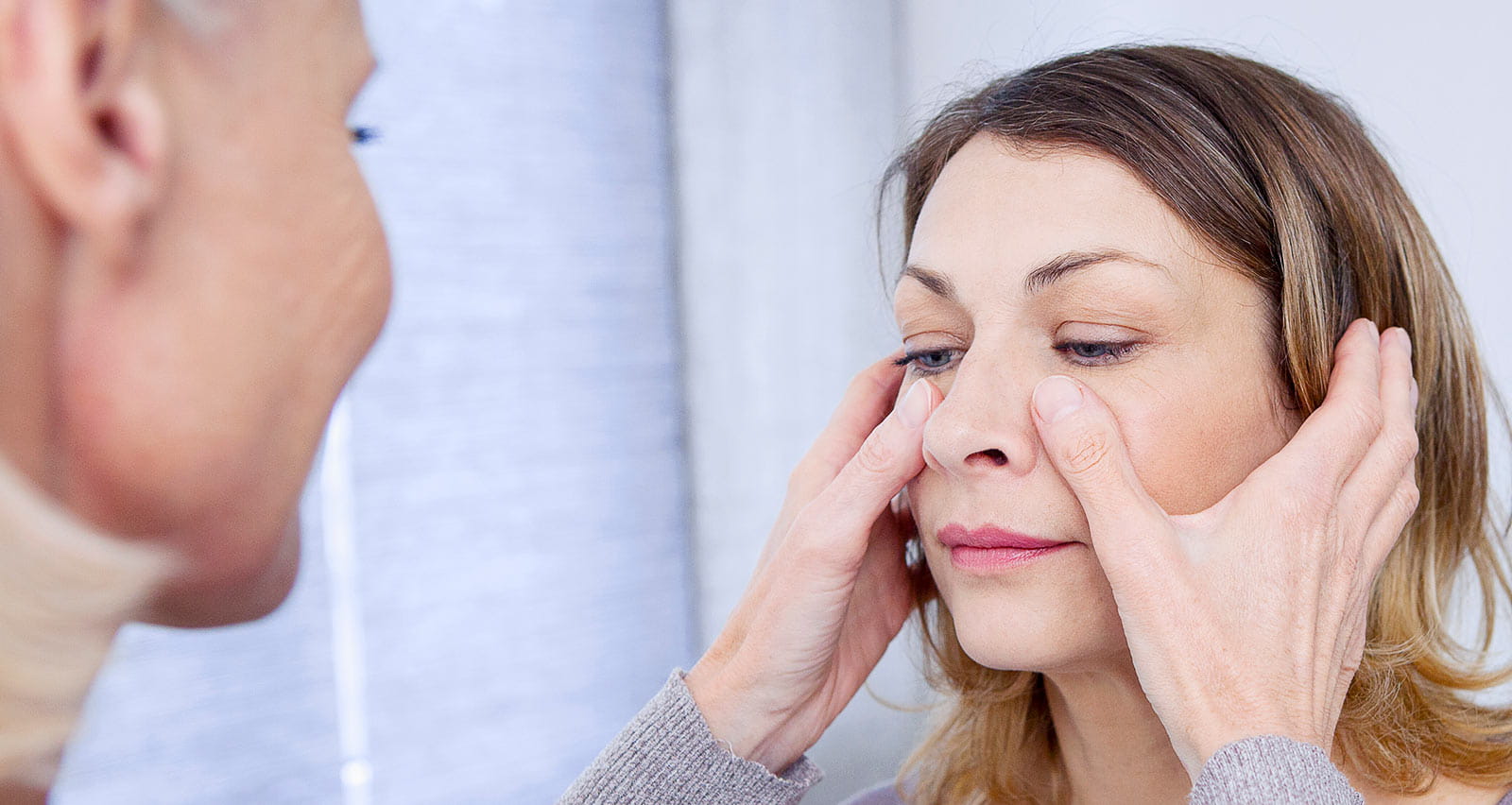
Expert Diagnosis & Treatment of Sinusitis
The sinuses are air-filled cavities in the skull and the bones around your nose. One of their main purposes is to produce mucus to help trap bacteria, viruses, allergens and other microscopic particles from the air. If any of these irritants cause swelling and inflammation of the sinuses, the body responds by increasing mucus production.
If the inflammation and swelling is severe, it can prevent normal mucus drainage, allowing it to build up in the sinus cavities. The trapped mucus creates an ideal environment for bacteria and viruses to grow and can lead to a sinus infection, also known as sinusitis.
Your health is important. Get expert care.
Offering in-person, video and telephone visits. Call 216-844-6000 or schedule online today.
Symptoms of a Sinus Infection
The symptoms of sinusitis often resemble a cold or flu, most commonly a runny nose and nasal congestion. However, if these symptoms persist beyond 7 – 10 days, it may be a sign that an infection has developed.
Other symptoms of a sinus infection include:
- Headache and generalized facial pain.
- Soreness or tenderness in the upper jaw and teeth.
- Post-nasal drip (mucus draining down the back of the throat).
- Swelling around the eyes that is worse in the morning.
- Bad breath.
- Sore throat and/or cough.
- Fever.
How Is Sinusitis Diagnosed?
Sinusitis is diagnosed by taking a full medical history and performing a physical exam. Your doctor may also recommend allergy testing or take a nasal swab to confirm or rule out a bacterial infection.
In some cases, additional testing may be performed to look for structural abnormalities in the sinuses. These may include a CT scan and/or an endoscopic exam of the sinuses. This is a minimally invasive procedure allows a doctor to visualize the structures inside the nose and sinuses using a thin, flexible tube (endoscope) with a light and camera attached.
Personalized Treatment Plans for Sinusitis
Treatment for sinusitis varies based on symptoms and the cause. In many cases, viral sinusitis will resolve in time without medical intervention. If a nasal swab confirms the presence of bacteria, antibiotics will be prescribed.
Your treatment plan may also include:
- Over-the-counter pain relievers to manage discomfort and reduce fever.
- Nonsteroidal anti-inflammatory medications (NSAIDs) to reduce inflammation.
- Decongestants and antihistamines to reduce congestion and decrease mucus production.
- Nose drops or nasal sprays.
- Sinus rinses to help keep the nasal passages hydrated.
- Use of a humidifier at home, especially in dry climates and during the winter months.
If nasal sprays are included in your treatment plan, it’s important to use them only for the prescribed length of time. When used long-term, nasal sprays can cause a rebound effect, making symptoms worse rather than better.
Management of Chronic Sinusitis
If sinus infections develop frequently and symptoms last 12 weeks or longer despite treatment, you may be diagnosed with chronic sinusitis.
Most cases of chronic sinusitis can be treated with a minimally invasive, in-office procedure called balloon sinuplasty. If imaging tests reveal structural abnormalities, surgery may be recommended.
What Is Balloon Sinuplasty?
Balloon sinuplasty gently opens blocked sinuses using a small balloon. Prior to the procedure, you’ll receive a topical decongestant and numbing spray to ensure your comfort. A thin hollow tube (catheter) with a deflated balloon is inserted through the nose into the blocked sinus cavity. Once in place, the balloon is slowly inflated to expand the sinus cavity and then withdrawn.
The procedure takes 1 – 2 hours, including recovery and most patients can resume normal activities after 1-2 days. Results are usually long-lasting, but some patients may require a repeat procedure.
Side effects are usually mild and may include some nasal drainage, congestion, grogginess and minor discomfort in the nasal area. Over-the-counter pain medications are used to manage pain and antibiotics may be prescribed to prevent infection. It’s important to follow your doctor’s post-procedure instructions for an optimal outcome. These may include nasal sprays and avoiding blowing the nose for several days.
Make an Appointment
Your health is important. Get expert care.
Offering in-person and virtual visits. Call 216-541-1856 or schedule online today.



